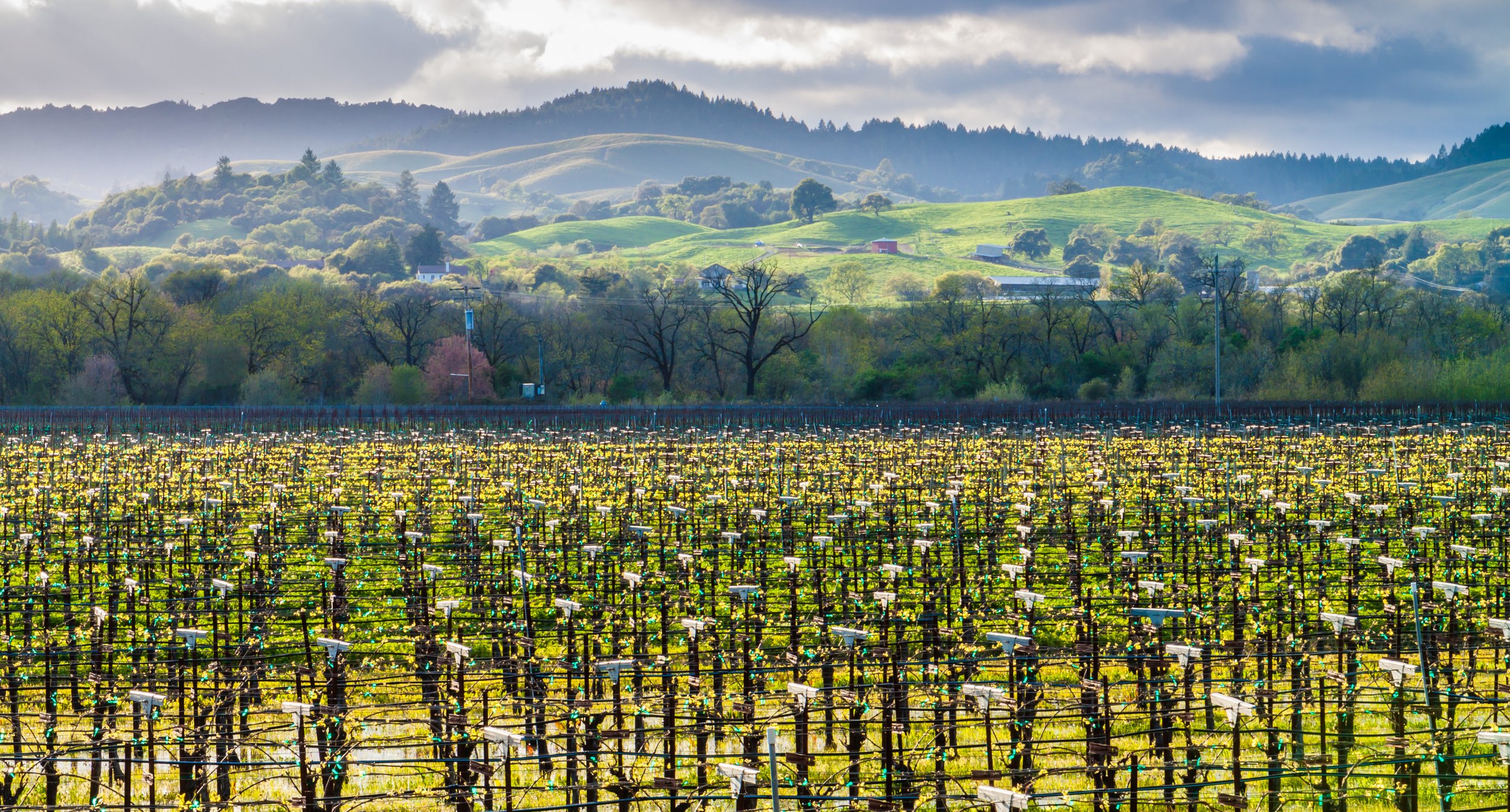Nothing Dry about Dry Creek Valley
by Seema Tikare
Sonoma County, 90 minutes north of San Francisco, is gorgeous wine country. Picture rolling, lush green hillsides covered in orderly and beautifully twisted head-trained vines interspersed with aspens, sycamores, wild grasses, flowers of all colors and herbs of all fragrances. If you are lucky, you will also see some sheep and chickens in the vineyards that add a bucolic, painterly vision of cultivation. Driving through the winding roads, you roll down the windows and smell the fresh air as if it is something that reaches into your lungs and blows wonder into your every pore.
The morning temperatures are cool and breezy and perhaps a bit foggy. The perfect temperatures to put on a sweater, drink some hot coffee and set off on a day of exploration for the senses. The afternoon warms you up just enough to sun your face, go for a bike ride, skip some stones over a lake, take a picnic blanket out to a field and enjoy the bounty of the land around you. And the evenings...are slow as molasses. Breathtaking shades of peach and lilac drift through the sky as the sun sinks lazily past the horizon, bringing that hint of chill, making you want to reach for your favorite bottle of zinfandel - or will it be cabernet tonight?
I am describing my trips around the Dry Creek Valley (DCV) of Sonoma Valley, alas from before the pandemic and some of the devastating fires. I miss it so much because I have never felt more whole as a person than I felt there. Life seems beautiful and simple out in the fields. People work hard, they grow the grapes, they make the wines and sell those beautifully labelled bottles full of dark magic. They enjoy the serenity of the wide open spaces and respect their lands and their heritage.
DCV is a small 16 x 2 mile viticultural area where you’ll find two roads, five stop signs but no stop lights, and 9,000 acres of mostly family owned farms. And it is not actually dry – it has simply been dammed up so that the flow of water has been reduced, but it is still a tributary to the Russian River. And the water provides cooler soils closer to the river and warmer soils farther up the banks, but provides enough water for the farmers to “dry farm” their grapes. It lies between the cool Russian River Valley to the south and the warmer Alexander Valley to the north, providing another axis of cooler and warmer terroir. It is cooler in the south because it receives cool Pacific fog and breeze through the San Francisco Bay and warmer up north as it enjoys more clear skies and sunlight.
DCV is most well-known for its robust Zinfandels. Don’t be led astray by the sweet, old-fashioned “white zinfandels” of the previous century. Zinfandel is a red grape, identical to the Primitivo grape of Italy and a more obscure grape Croatian grape called Crljenak Kaštelanki. Cabernet Sauvignon, being a more sought-after variety, has sometimes caused grape growers to switch from Zinfandel to Cabernet, but there are still many old vine Zinfandel plantings to be found – anywhere from 30 to 100 years old. As consumers have begun to understand that Zinfandel makes very good wines, the interest in preserving these old vines and planting new ones has increased in recent years. And the wines are full of brambly black fruit – plums, cherries, berries and currants with spices and a bit of tea leaf on the finish. Early ripening with more manageable tannins and plenty of body, the struggle now is to make enough of it for the current market.
If you are feeling thirsty for some Zinfandel, some of my favorite wines from DCV are made by Ridge’s Lytton Estate, Raffanelli, Seghesio and the eponymous Dry Creek Vineyard.

